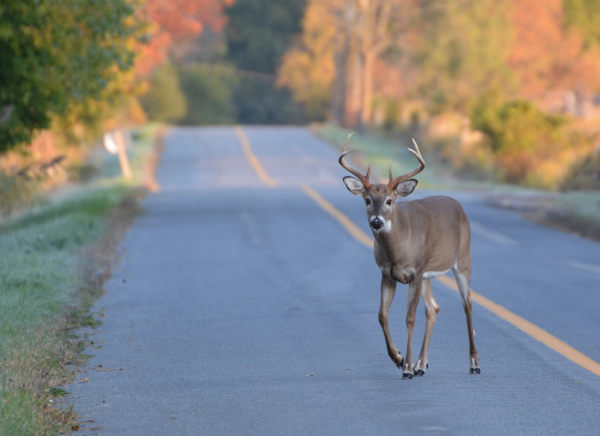Four Tips for Safe Autumn Driving
Autumn driving hazards and how to prepare for them
AAMCO | 10/16/2020
It’s that beautiful time of year when the colors change, the leaves are falling, and all you want to do is put on a scarf and enjoy the fiery foliage. Before you head to your favorite coffee shop or drive out to a local pumpkin patch, it is essential to be aware of the extra driving hazards that come with the changing seasons. Here are four hazards to look out for in the autumn weather, plus some general safety tips that will keep your car on the road to wherever your fall destination may be.
Short Days/Long Nights
When fall comes around, the days shorten and the nights stretch longer, which means more time spent on the road in darkness — especially after daylight savings time ends. Driving in the dark can be particularly dangerous because it causes our depth perception, color recognition, and peripheral vision to weaken. Additionally, the glare of headlights from other vehicles can be temporarily blinding.
Night driving can also be problematic for those with already compromised vision, including the elderly. Research shows that our eyesight naturally gets worse as we age. According to AAA, our pupils get smaller as we age and don’t dilate as well in the darkness, making night driving exceptionally dangerous. For better safety, consider driving more slowly in the evening and pay extra attention to your surroundings.
Incoming Roadkill
If you are not being careful and remaining vigilant as the days darken, the next critter to cross the road could be your next accident. The longer nights mean you can expect more animals on the road than usual. These can include raccoons, possums, rabbits, foxes, and, notably, deer. Most animals don’t come out until dusk, and they’ll often lurk along the streets and roads until dawn. Deer are known for coming out around sunrise and sunset. November is deer mating season, making them even more likely to be out and about. Pay close attention to the sides of the road, especially if you see deer crossing signs. Know what to do if you see a deer on the road to avoid a collision. Hitting a deer can put your life at risk as well as cause significant damage to your car, sometimes beyond repair.
Glaring Sun
Something else to watch out for during sunrise and sunset is the glare of the sun. The sun sits lower in the sky during the fall and winter months, causing it to reflect light at a lower angle and into your eyes, making it much more challenging to see the road ahead. Typical commuting hours means more drivers will be facing the sun’s glare more often. Wearing sunglasses will help reduce the significant glaring effects the sun can have on your ability to see. Additionally, make sure to keep your windshield clean of bugs, dirt, and water streaks, so they don’t impede your vision further — whether by blocking direct sight of a hazard on the road or by making the glare from the sun worse. During these times, drive more slowly and carefully, noting school zones and other high traffic areas.
Changing Weather
The extra chill to the air in autumn can mean three things: falling leaves, fog, and frost.
While autumn leaves are beautiful, they can also be a serious safety hazard. Leaves cover the ground everywhere, potentially hiding potholes, traffic lines, large bumps, and other hazards. Leaves are also slippery when wet, so it’s essential to take it slow after an autumn rain.
Fall is often the foggiest time of the year. Fog is hazardous to drive in — the thicker the fog, the greater the danger. Drive slowly and cautiously in mist, and use your fog lights, not your high beams. Fog lights provide light under the fog instead of straight into it, which only reflects off the low clouds and back into your eyes. Make sure to know how to operate your vehicle’s fog lights and when to use them.
Dropping temperatures will soon add a sheath of frost to your windshield every morning, so make sure you have a scraper handy and a little extra time to get where you are going. You’ll also want to be on careful bridges, overpasses, and shaded areas, where the ice on the road can be harder to see and make for slippery conditions.
General safety tips
Here are a few general tips to consider as you prepare for your autumn outing.
- Car maintenance – As the fall season arrives, give your car an autumn maintenance checkup. Top car care items to examine are cracks or chips in the windshield, the condition of your wipers, your tire tread and pressure, and the proper functioning of all car lights.
- Vehicle emergency kit – It’s always a great idea to keep an emergency kit in your vehicle. This should include a flashlight, jumper cables, and a car battery charger. You might also consider items like a blanket, coat, windshield scraper, and non-perishable food items as the temperatures grow colder.
- Driving habits – Ensure you have good general driving habits like remaining focused with no distractions, staying within the speed limit, avoiding hard braking, maintaining a safe following distance, and always wearing your seatbelt.
Every season has its unique driving hazards. By following the advice above, you can safely enjoy all the experiences autumn has to offer.


